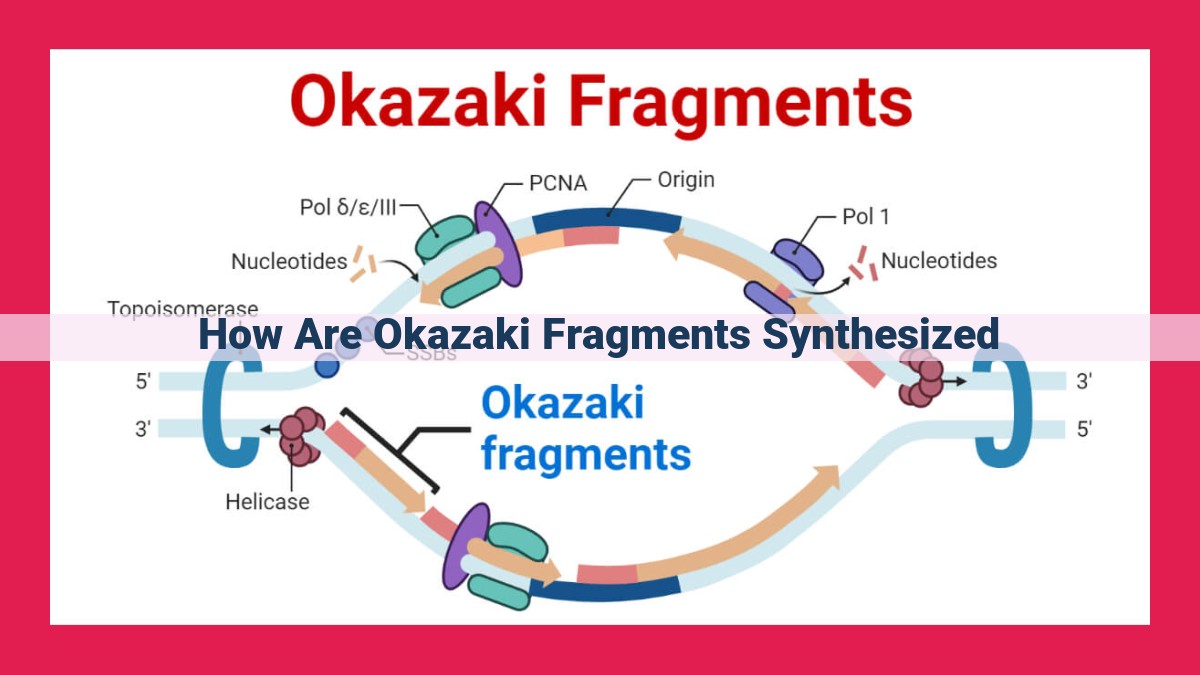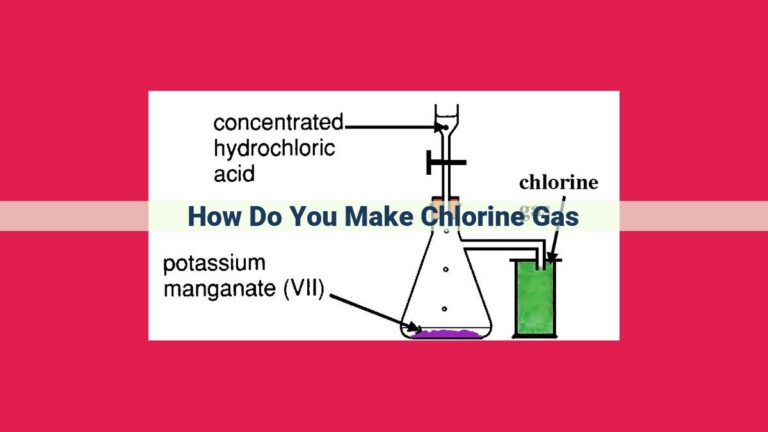Optimized Seo Title:unveiling Dna Replication: Okazaki Fragments And The Synchronization Of Lagging And Leading Strand Synthesis

During DNA replication, the lagging strand is synthesized in short fragments called Okazaki fragments. Primase synthesizes RNA primers, DNA Polymerase III extends fragments using these primers, and ligase joins the fragments. Helicase unwinds DNA while single-stranded binding proteins protect exposed DNA. The synthesis of Okazaki fragments on the lagging strand is coordinated with the continuous synthesis on the leading strand to ensure accurate replication.
DNA Replication and the Leading Strand
- Explain DNA replication and the role of DNA Polymerase III in synthesizing the leading strand.
DNA Replication and the Leading Strand
In the intricate dance of DNA replication, the leading strand gracefully extends, guided by the maestro, DNA Polymerase III. This enzyme, with its remarkable precision, meticulously adds nucleotides one by one, following the template provided by the original strand.
Lagging Strand and Okazaki Fragments
Unlike its elegant counterpart, the lagging strand faces a challenge. DNA Polymerase III, bound by its limitations, can only synthesize continuously in one direction. To overcome this hurdle, the lagging strand forms a series of Okazaki fragments, short stretches of DNA synthesized in a discontinuous fashion.
Role of Primase, Ligase, and Okazaki Fragments
Enter primase, the unsung hero who lays the foundation for Okazaki fragment synthesis. It synthesizes RNA primers, tiny guides that mark the starting points for DNA Polymerase III’s extension. Once fragments are formed, DNA Polymerase III extends them, using the primers as its guiding light.
The final touch comes from ligase, the molecular glue that seamlessly joins the fragments together, forming a continuous strand.
Other Enzymes Involved
This intricate process is supported by a team of other enzymes:
- Helicase unwinds the DNA double helix, providing access to the template strands.
- Single-stranded binding proteins shield the exposed DNA, preventing it from reannealing.
Coordination of Leading and Lagging Strands
While the leading strand joyously extends continuously, the lagging strand must meticulously patch together its fragments. The coordination of these two processes is a marvel of cellular efficiency.
Summary
In conclusion, Okazaki fragments are essential to DNA replication, ensuring that the information encoded in the leading strand is faithfully copied onto the lagging strand. This complex process, involving the teamwork of multiple enzymes, is crucial for accurate and efficient DNA replication, the cornerstone of life’s continuity.
**The Lagging Strand and Okazaki Fragments: A Tale of Discontinuous Synthesis in DNA Replication**
DNA replication, the process of making an exact copy of an organism’s genetic material, is a marvel of cellular biology. In this intricate dance, DNA Polymerase III plays a crucial role in synthesizing the leading strand continuously. However, the lagging strand presents a unique challenge due to the antiparallel nature of DNA.
Imagine a highway under construction. Traffic can flow smoothly in one direction (continuous synthesis), but the other direction (discontinuous synthesis) requires a different approach. This is where the concept of Okazaki fragments comes into play.
These fragments are small pieces of DNA synthesized by DNA Polymerase III in the direction opposite to the unwinding of the DNA double helix. Primase, an enzyme, lays down RNA primers to initiate fragment synthesis, providing a starting point for the polymerase. Once fragments are complete, ligase joins them together, creating a continuous strand.
This discontinuous synthesis on the lagging strand ensures that DNA replication maintains its accuracy and efficiency. Each Okazaki fragment serves as a checkpoint, allowing for error correction before they are joined together. Moreover, this mechanism allows for the coordination of leading and lagging strand synthesis, ensuring that both strands are completed in a timely and accurate manner.
The Vital Role of Primase, Ligase, and Okazaki Fragments in DNA Replication
DNA replication, a crucial process that ensures the accurate transmission of genetic information, is a complex dance of molecular machinery. One of the key players in this intricate choreography is DNA Polymerase III, responsible for synthesizing new DNA strands. However, DNA Polymerase III faces a challenge: it can only extend DNA fragments continuously in one direction.
Enter primase, a clever enzyme that solves this dilemma. Primase steps in to synthesize short RNA primers, providing a temporary scaffold for DNA Polymerase III to initiate synthesis. Once the fragments are extended, another enzyme, DNA ligase, takes the stage to join these fragments together, forming a continuous DNA strand.
Imagine the lagging strand, a DNA strand that cannot be continuously synthesized, as a mosaic composed of smaller fragments known as Okazaki fragments. These fragments are assembled sequentially, with each fragment primed by primase and extended by DNA Polymerase III. Once extended, ligase carefully sutures the fragments together, creating a seamless stretch of DNA.
This intricate process ensures that both the leading and lagging strands are synthesized with equal accuracy, guaranteeing the integrity of the genetic code passed down from generation to generation.
Other Enzymes Involved in DNA Replication
The intricate process of DNA replication is not solely orchestrated by the star player, DNA Polymerase III. Other enzymes play crucial supporting roles, each contributing to the seamless and accurate duplication of our genetic blueprints.
Helicase, the master DNA unwinder, effortlessly separates the double helix, creating two DNA strands that serve as templates for the new DNA molecules. As DNA unwinds, single-stranded binding proteins, the protective guardians of exposed DNA, rush in to prevent the strands from reattaching prematurely.
These unsung heroes work in concert to lay the foundation for the precise replication of our genetic code, ensuring that the information encoded within our DNA is faithfully passed on to future generations.
Coordination of Leading and Lagging Strands
While DNA polymerase III replicates the leading strand continuously, it faces challenges with the lagging strand. To ensure the lagging strand is also replicated accurately, cells employ a unique strategy involving Okazaki fragments.
The synthesis of Okazaki fragments on the lagging strand is meticulously coordinated with the continuous synthesis of the leading strand. As the DNA replication fork advances, helicase unwinds the DNA double helix, and single-stranded binding proteins safeguard the exposed DNA strands.
Primase, an enzyme, synthesizes short RNA primers on the lagging strand template. These primers provide a starting point for DNA polymerase III to extend the Okazaki fragments. Once the DNA polymerase III reaches the end of an Okazaki fragment, it detaches, leaving behind a single-stranded DNA gap.
Subsequently, DNA polymerase I removes the RNA primers and replaces them with DNA nucleotides, filling in the single-stranded** gaps. Finally, DNA ligase joins the Okazaki fragments, creating a cohesive lagging strand.
This intricate coordination enables the replication of both the leading and lagging strands with equal accuracy. The Okazaki fragments play a crucial role in maintaining the fidelity of DNA replication, ensuring the accurate transmission of genetic information to future generations.
Unraveling the Tale of Okazaki Fragments: The Heroes of Lagging Strand DNA Replication
In the intricate world of DNA replication, a remarkable dance unfolds as two strands of genetic material unwind and are faithfully copied. While the leading strand enjoys a straightforward journey, the lagging strand encounters a unique challenge. It’s here that the unsung heroes, Okazaki fragments, step into the limelight.
The Leading Strand: A Smooth Operator
As the replication fork unwinds the DNA, DNA Polymerase III, a tireless enzyme, glides along the leading strand with unwavering precision. With each nucleotide it encounters, it seamlessly adds its complement, creating a continuous, ever-growing copy of the original strand.
The Lagging Strand: A Bumpy Ride
The lagging strand, however, faces a peculiar obstacle. DNA Polymerase III, bound by the laws of nature, can only add nucleotides in a 5′ to 3′ direction. As the replication fork moves forward, the lagging strand is left exposed on the 3′ end, creating a gap.
Enter the Okazaki Fragments: Tiny but Mighty
To overcome this challenge, a team of enzymes, including primase and DNA Polymerase III, devise a clever strategy. Primase intervenes, laying down short RNA primers on the lagging strand. These primers serve as beacons, guiding DNA Polymerase III to extend the strand by synthesizing new DNA fragments.
These fragments, known as Okazaki fragments, are short and numerous, forming a mosaic of new DNA that gradually fills the gaps left behind.
Ligase: The Master Seamstress
Once the Okazaki fragments are in place, a master seamstress, DNA ligase, takes center stage. With its deft touch, ligase joins the fragments together, creating a continuous, unbroken lagging strand.
Other Essential Players
The synthesis of Okazaki fragments is a well-orchestrated symphony, involving several other key enzymes. Helicase, the master unwinder, prepares the DNA by separating its strands. Single-stranded binding proteins, like watchful guardians, protect the exposed DNA from damage.
Coordination: A Delicate Balance
The lagging and leading strands navigate their respective challenges with remarkable coordination. As the continuous synthesis on the leading strand progresses, the synthesis of Okazaki fragments on the lagging strand keeps pace, ensuring the faithful replication of the entire DNA molecule.
Summary: The Power of Collaboration
The synthesis of Okazaki fragments during DNA replication is a testament to the power of collaboration. By synthesizing short fragments and joining them together, the DNA replication machinery overcomes the challenges of the lagging strand, ensuring the accurate and complete duplication of genetic information. These fragments, small as they may seem, play an indispensable role in the preservation of our genetic heritage.





